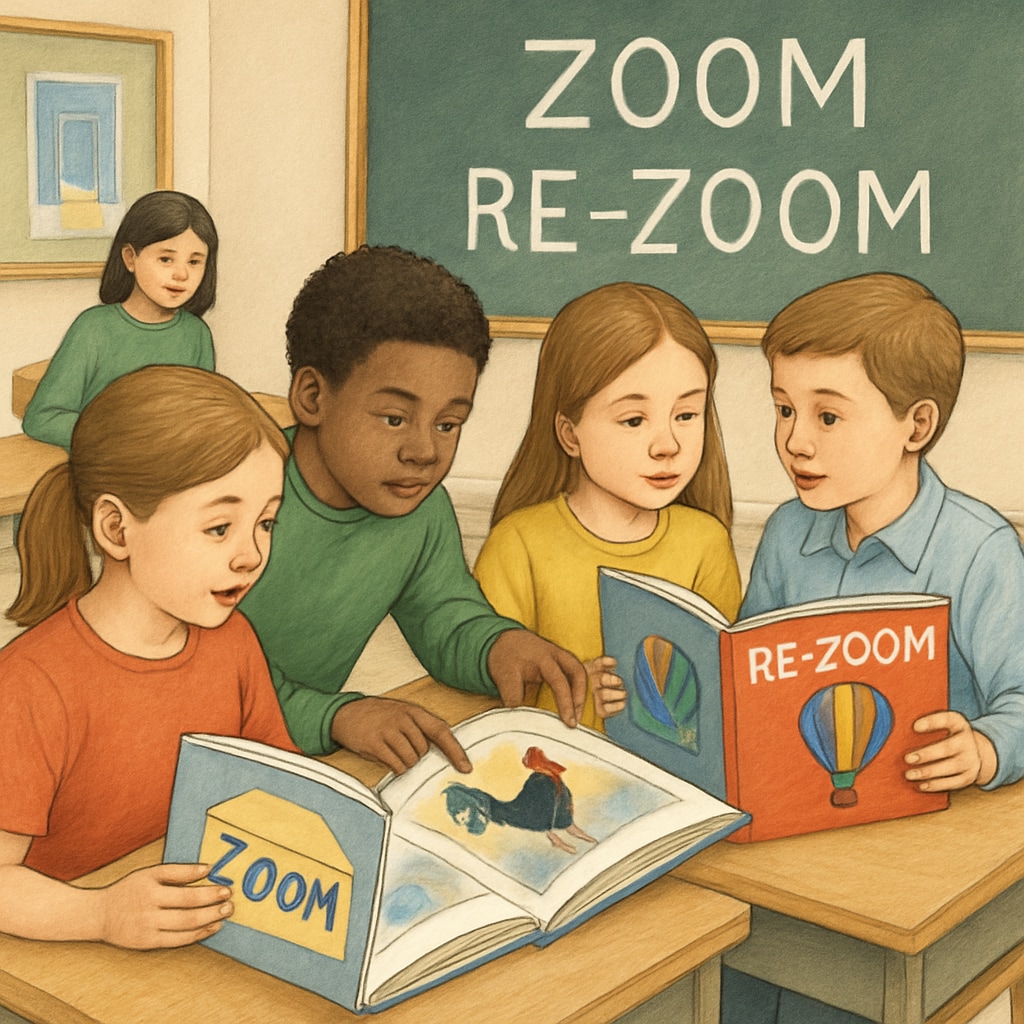In modern K12 education, teachers continuously seek engaging methods to inspire students and foster essential skills. Zoom and ReZoom teaching activities have emerged as creative tools to enhance classroom dynamics. These visual thinking exercises not only promote observation and reasoning but also encourage critical thinking by challenging students to connect concepts and explore perspectives. This article delves into the innovative applications of these activities and provides practical strategies and resources for educators.
What Are Zoom and ReZoom Activities?
Zoom and ReZoom are visual storytelling books authored by Istvan Banyai. Each page of “Zoom” and “ReZoom” reveals a broader perspective, encouraging students to think critically and observe details within a larger context. Educators leverage these activities to cultivate skills such as sequencing, inference, collaboration, and problem-solving.
For example, in a Zoom activity, students may examine a close-up image and gradually “zoom out” to uncover how it fits within a bigger picture. Similarly, ReZoom offers a series of connected images that challenge students to interpret transitions and relationships. These activities are particularly effective for stimulating curiosity and sparking classroom discussions.

Benefits of Using Zoom and ReZoom Teaching Tools
Implementing Zoom and ReZoom activities in the classroom provides numerous educational benefits. These tools are versatile and can be adapted to various subjects and age groups, making them ideal for K12 education. Below are some key advantages:
- Enhanced Observation Skills: Students learn to pay attention to detail and identify patterns within images.
- Improved Reasoning Ability: By interpreting visual clues, students develop logical thinking and problem-solving skills.
- Critical Thinking Development: Activities encourage students to analyze relationships and draw conclusions, fostering independent thought.
- Collaborative Learning: Students work together to deduce answers, building teamwork and communication skills.
- Cross-Disciplinary Applications: These tools can be used in art, science, history, and even mathematics to connect visual concepts with academic content.
How to Implement Zoom and ReZoom Activities in Your Classroom
To maximize the impact of Zoom and ReZoom activities, educators can follow these practical strategies:
- Introduce the Concept: Begin by explaining how the books work and the goals of the activity. Use examples to familiarize students with the process.
- Divide Students into Groups: Collaboration is key. Assign groups to analyze pages together and discuss their observations.
- Encourage Open Discussion: Facilitate conversations where students share their interpretations and reasoning.
- Link to Curriculum Topics: Connect the visual concepts to relevant subjects, such as analyzing historical artifacts or exploring ecosystems.
- Use Digital Tools: If physical copies are unavailable, consider digital versions or presentations to display images on a larger scale.

Resources for Zoom and ReZoom Activities
Finding resources for Zoom and ReZoom activities is relatively simple. Educators can purchase the books online or access digital formats through educational platforms. For additional inspiration, websites like Wikipedia’s Zoom Book Entry provide background information, while Britannica offers related educational materials.
Additionally, many teacher forums and blogs offer creative ideas for integrating Zoom and ReZoom into lesson plans. These include printable worksheets, discussion prompts, and even video tutorials to guide classroom implementation.
Conclusion
Zoom and ReZoom teaching activities are powerful tools for enhancing K12 classrooms. By fostering observation, reasoning, and critical thinking, these exercises help students develop essential life skills while keeping them engaged. Educators can easily adapt these activities to suit various subjects and age groups, making them a versatile addition to any curriculum. With the strategies and resources outlined here, you can confidently integrate Zoom and ReZoom into your teaching toolkit and transform your classroom dynamics.


